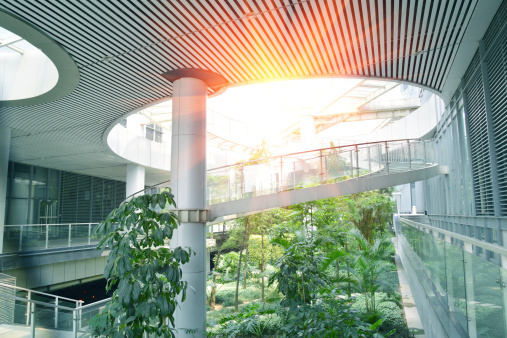
Living buildings are more than simply green.
Architecture has changed so much just in recent years. Large strides have been made toward more efficient design with less waste and less reliance on fossil fuels. But what might you say about a building that’s alive? And what is life, anyway?
Minimizing waste isn’t the same as being alive. But what about a building that created more than it used? That repaired itself? That stayed healthy of its own accord?
That’s a new green goal, and one that’s more approachable than ever before.

Net positive is the new net zero.
A Living Building is Net Positive
Not unlike LEED certifications, the Living Building Challenge is part green building certification. But it’s also part philosophy and part advocacy tool, according to the Living Future website.
Living Building takes the green movement a step ahead. Or maybe that should be a giant leap ahead. It’s not merely sustainable, whatever the true definition of that happens to be. It’s not just net zero, which is any building with net zero energy consumption. It’s moved on ahead of that.
The Living Building Challenge is about net positive. This means the whole project must either “produce more than it uses, treat more than it’s responsible for, or use waste that is already in the waste stream.” The guidelines apply to water, energy, and waste. All of these characteristics are wonderful, but are these living buildings actually alive?

Innovative thinkers are looking at sustainability a whole new way.
Biomimicry: Architecture Imitates Life
Talking about net positive is one thing. It’s a lofty goal, but some apparently achieve it if past winners of the Living Building Challenge are any indication. But achieving on a broad scale is something else. Biomimicry theory might have some clues.
Biomimicry attempts to use nature as a template for innovation. It examines nature for cues on how to behave. Instead looking like a flower, architecture should “act like one,” says architect and chief sustainability officer for RTKL, Lance Hosey, at the Huffington Post.
Rejecting inescapable entropy, a net positive, living structure would either resist or reverse it, says Hosey. Living things heal, repair, and build. And the technology now exists to do just that. New concrete reacts to moisture by shrinking, which extends its life. Self-mending metals were an accidental discovery, says engineer and materials scientist, Michael Demkowicz, in an interview with City Lab.
Declaring a structure “living” isn’t really anything new. In fact, Hoser recalls Frank Lloyd Wright and his use of the word organic to allude to the same thing. But Wright’s designs fall short of the vision of today. They look like a flower.
So many terms surround green building with so many different ways to describe them. There’s little in the way of a be-all-end-all definition. But if life means sharing the characteristics with a living thing, then architecture might be onto something.
Net positive biomimicry. Your next house might welcome you home for real.
Architecture is all about looking to the future. And with professional development hours through PDH Academy, your requirements are easily met. Check out our courses, to keep yourself current. Who knows – maybe you’ll be on the cutting edge of the next new green development.






